Cucumbers are a very popular veggie that thrives in warmer climates, but also needs lots of water. They’re a little pretentious to grow, but they’re well worth the effort.
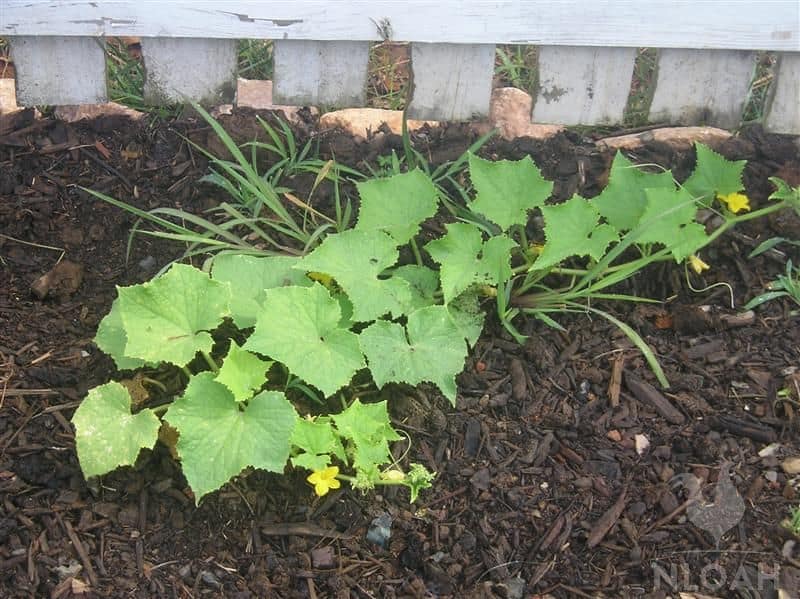
Cucumbers are a very common garden plant that can be used in salads, as a side dish, or in a variety of recipes.
My cucumbers are looking awesome! I’m really pleased with how well they’ve done so far. I planted them along my fence in a raised bed made from a bunch of large rocks that I dug up from the old stone wall by the chimney in our woods.
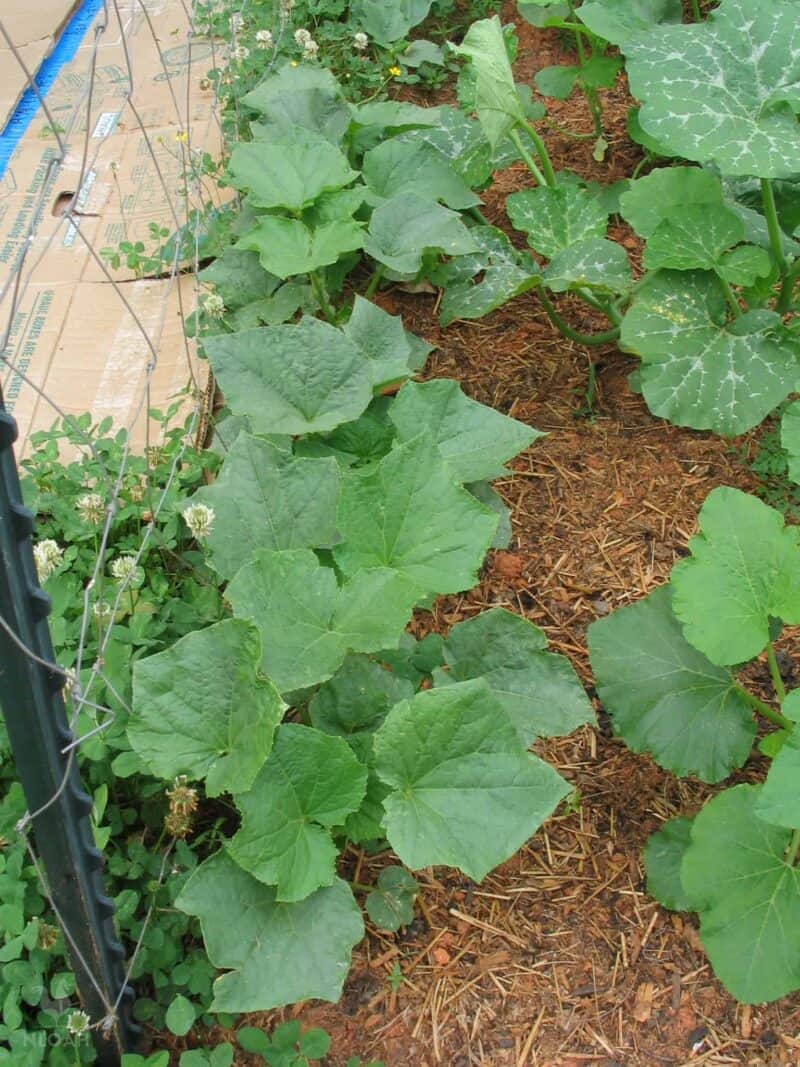
Table of Contents:
Best Cucumber Varieties
There are two many types of cucumbers you can grow – vining cucumbers and bush cucumbers. The vines can be trained to move up a trellis or crawl along the ground while the bush types grow in a more compact variety.
The plus side of growing vining cucumbers is that they have a tendency to yield more fruit during the growing season. However, bush varieties are great for growing in containers or in more space-restrained gardens.
Not sure which kind to grow? Consider planting several crops in succession two weeks apart so that you can enjoy a constant harvest of fresh cucumbers all summer long.
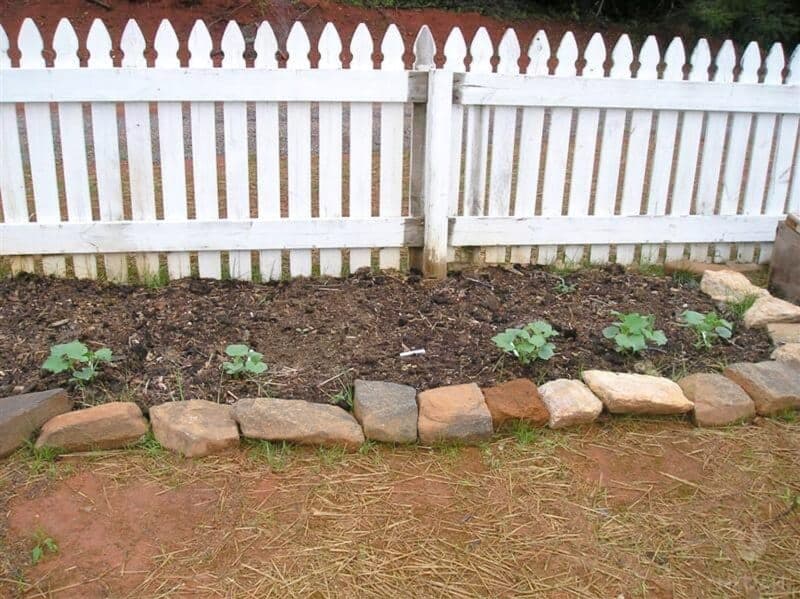
You can also categorize cucumber types by slicing or pickling.
Some great pickling varieties include:
- ✅ Boston Pickling
- ✅ Bush Pickle
- ✅ Carolina
- ✅ Fancipak
- ✅ Little Leaf H-19
- ✅ Calypso
- ✅ Parisian
- ✅ Supremo
Some excellent slicing cucumbers are:
- ✅ Burpless #26
- ✅ Bush Champion
- ✅ Diva
- ✅ Early Pride
- ✅ Marketmore 76
- ✅ Marketer
- ✅ Salad Bush
- ✅ Spacemaster
- ✅ Sugar Crunch
- ✅ Straight Eight
- ✅ Tendergreen Burpless
Planting Cucumbers
Ready to start growing cucumbers? Here are some tips to help you out when you plant.
Growing Season
Cucumbers are warm-weather, tropical vegetables that do best when the weather is warm and humid. Therefore, you should only attempt to grow cucumbers during the summer months.
Even gardeners in places where there aren’t hard freezes or snowfall should be careful about planting cucumbers when the weather is even slightly chilly.
These plants are so sensitive to frost that they really shouldn’t be planted until soil temperatures are reliable within the 70-degreeF (21 C) range (which is usually no sooner than two weeks after the last frost date).
Starting Cucumbers from Seed
Plant cucumbers only when the temperatures reach the mid-70s to 80s during the day. That way, you can ensure that the soil (which takes longer to heat up) is adequately warm, too.
Space seeds are about 36 to 60 inches apart. I always recommend starting cucumbers from seed directly in the garden.
If you’d like, you can always start them from seed indoors a few weeks before the last first, too, but you shouldn’t do this unless you plan on setting them in biodegradable peat pots.
The roots of cucumber plants are incredibly prone to damage when you transplant and pull them out of the containers.
Because cucumber seeds germinate so quickly and the plants grow so fast, though, there’s not much benefit associated with starting these plants from seed before they need to be placed in the garden (nor should you buy seedlings from a nursery). It’s hard to mess up the direct sow method!
Choose a spot in the garden that receives lots of sunlight and is easy to access for irrigation and weeding. For best results, choose a location with at least eight hours of daily sunlight for your cucumbers(early morning sunlight is the best).
The soil should be fertile and well-draining. Consider mixing in a bit of aged compost (a few inches should do) prior to planting.
They can tolerate a bit of alkalinity in the soil, so it’s okay if the soil pH around 6.0 to 7.6.
When you plant your seedlings, make sure you label where they are. Space vining varieties at least a foot apart only if you are planning on installing a trellis.
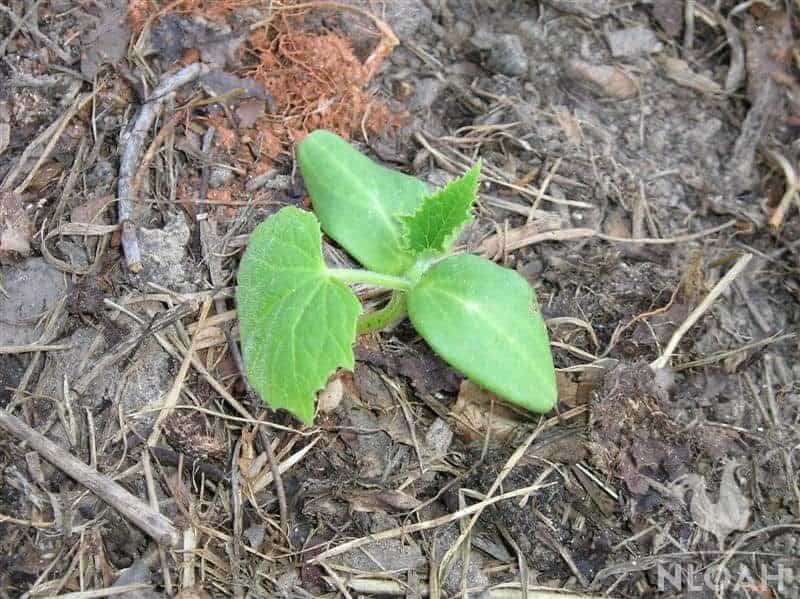
As you plant cucumbers, you will do so in mounds or “hills.” This simply means hilling a bit of soil up around your seedlings.
Plant two to three seeds per hill, following the instructions on your seed packet. This raised planting will help reduce the likelihood of rot from heavy watering or rainstorms.
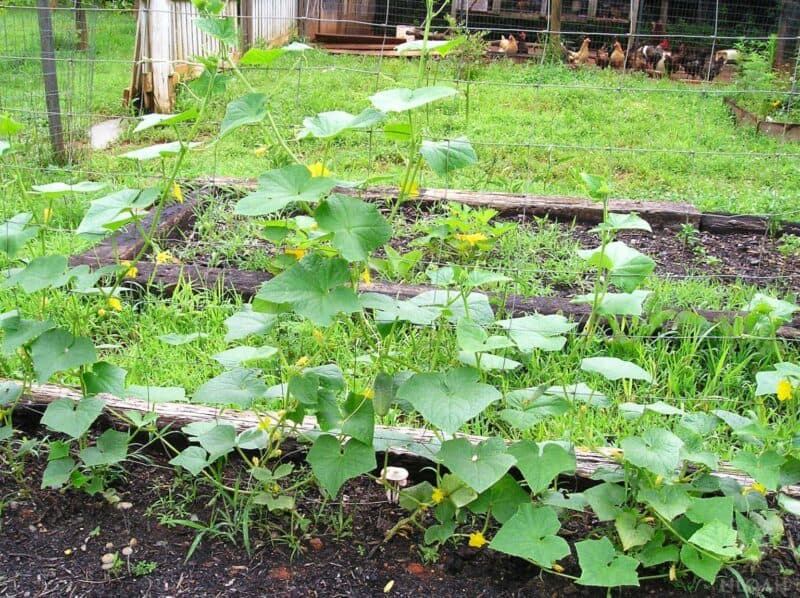
Installing a Trellis
When you plant your seeds, install your trellises. This will keep the fruit clean, and prevent it from rotting on the ground. It can also save space. You can use a wide-diameter tomato cage or you can use something like welded wire fencing or hog wire.
As your plants grow, you can wind the tendrils up onto the trellis.
Warming Up the Soil
Again, cucumber plants need the soil to be super warm. If the spring weather is chillier than you anticipated, you can warm up the soil by a few degrees by covering the planting area with a layer of black plastic.
Once you’re ready to plant, you can cut right into the plastic and plant the cucumbers directly into the holes. You could also pull it up, but leaving the plastic down will help you suppress weeds and keep the soil warmer.
Caring for Cucumber Plants
Now that your cucumber plants are in the ground, here are some tips for caring for them.
Irrigation
Water is extremely important when caring for developing cucumbers. Make sure the soil is always moist with about an inch of water per week.
You may need to provide even more water than that if it gets hot and dry.
It’s not a bad idea to set up an irrigation system. Inconsistent or inadequate water can cause your cucumbers to become bitter-tasting or oddly-shaped.
Use drip irrigation to water the cucumbers at the soil level. That way, the leaves will stay dry so you don’t have to worry about diseases – while also making sure you’re getting enough water for your cucumbers.
Weed Around the Vines
Be sure to cultivate carefully around your cucumber plants as they are growing. Watch the vines when you weed so you don’t damage them.
Adding a layer of mulch is another great way to minimize wee pressure. Put down a two- to three-inch layer of organic mulch like wheat straw ,pine straw, chopped leaves, or bark. Do this shortly after you plant your cucumbers and you should find that the weed pressure is lessened.
Not only that, but mulch can help keep the fruit clean and add nutrients to the soil.
Use Fertilizer
Cucumbers are potassium-craving veggies and you need to use a high-quality fertilizer to keep your plants healthy. The right nutrients will help your cucumbers thrive!
You can use any water-soluble fertilizer meant for vegetable crops or you can use organic fertilizers, like compost. The latter will help introduce beneficial microbes to the soil in addition to nutrients. You can fertilize once every few weeks after the seedlings are a few inches tall.
Watch for Pests and Diseases
There are a few pests and diseases you will need to watch out for while growing cucumbers.
Squash bugs are particularly pernicious. These bugs target seedlings. Slugs, on the other hand, would rather eat the ripening fruit (especially if they’re lying directly on the ground).
Aphids and cucumber beetles will go after buds and leaves. Cucumber beetles also go after vines and the stem of the plant. They chew holes in the flowers and leaves. Plus, these beetles can spread viral diseases that ultimately cause the plants to wilt and die.
Using mulch and trellising your vines can get the fruit off the ground, and reduce the impact that pests have on your plants. You can also use natural treatments like diatomaceous earth to dust around your plants and prevent as well as repel the vast majority of pests.
As far as diseases go, the biggest ones to watch out for tend to be fungal, such as powdery mildew. Powdery mildew causes white spots and patches to appear on plants. Although it usually won’t kill your plants outright, it can stunt their growth.
Other fungal diseases like powdery mildew cause similar symptoms, some of them more severe than others. To minimize this, avoid handling or harvesting vines when they’re wet and space your plants properly when you plant them. Watering with drip irrigation systems (versus overhead watering) can help, too.
Consider Pollination
Sometimes, you might find that your vines bloom but fail to produce fruit.
Chances are, something is going wrong in the pollination process. To understand whether this is the cause, look for both male and female flowers. Male flowers usually appear first.
These will have a small swelling that ultimately turns into a maturecucumber.
If these swellings never turn into fruit, you will need to do some hand pollination. This simply involves brushing some pollen from the male flower onto the female flower with a Q-tip or similar tool.
Companion Planting
There are some plants that you might want to consider planting around your cucumbers to maximize their growth.
Radishes, for instance, help repel harmful insects like aphids and cucumber beetles.
That said, there are some you should avoid planting nearby, too. Don’t plant cucumbers near potatoes. Potatoes release a substance in the ground that can hinder how well your cucumbers grow.
You should also avoid planting cucumbers near other cucurbits, like squashes and pumpkins. They’re all vulnerable to the same pests and to many of the same diseases. Planting them near other related family members can encourage a free-for-all that you’re better off to avoid!
Finally, remember to rotate your crops each year. Don’t plant cucumbers in a spot where cucumbers or related crops were grown within the last two to three years, as this can encourage overwintering diseases and pests to proliferate.
Growing in Pots
Cucumbers can even be grown in pots! You’ll follow all the same tips recommended above. Just make sure you choose a bush variety of cucumber and that you only plant one or two plants per container. The more space, the better, and be sure to install a trellis so they have room to sprawl!
Harvesting
Your cucumbers are ready to be harvested whenever they are large enough to use – you could technically harvest as soon as you see those baby-sized cakes on the vine!
Check your plants several times per day once the fruit begins to appear. Cucumbers get very large very quickly – and once they get big, they don’t taste as good.
Plus, the more often you harvest, the more fruit the vines will produce.
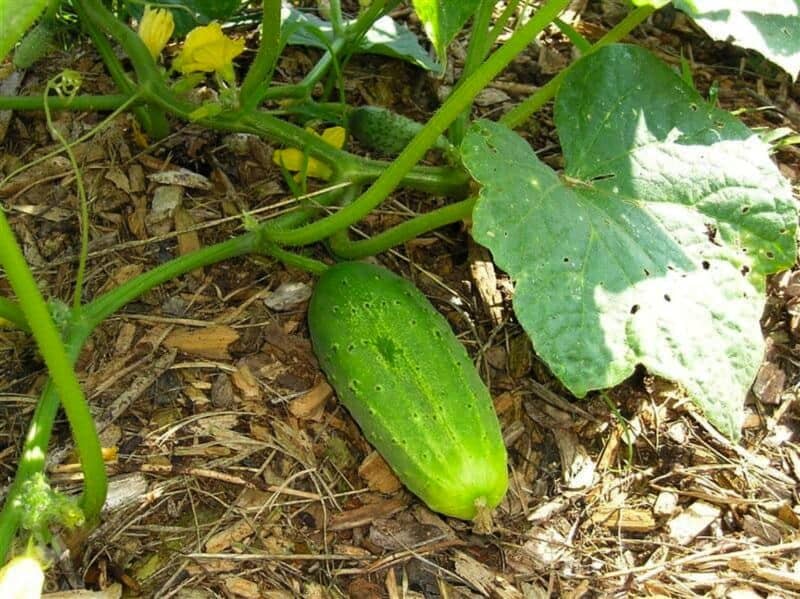
To harvest, use a pair of clippers to cut the stem right above the fruit. Pulling can kill the vine and yank the entire plant from the ground.
When you harvest a cucumber, look at the blossom end. If it’s yellow, the cucumber might be too ripe and it won’t taste the best.
Uses for Cucumbers
Cucumber can be stored in the refrigerator for a few weeks, but I recommend eating them promptly for the best freshness.
Besides eating them fresh, cucumbers can be used in all kinds of ways. My favorite? Making pickles, of course! They’re also delicious in salads, soups, and relishes.
Growing Cucumbers – What I Did Different
This year, I tried a couple new things in my cucumber garden.
I layered wet newspaper over the grass, then filled it all in with aged horse barn litter. In that I dug out little holes about a foot apart, and filled them in with compost. This is where I planted my seeds. I covered the seeds with about 1/2″ more compost, and watered for the first few days.
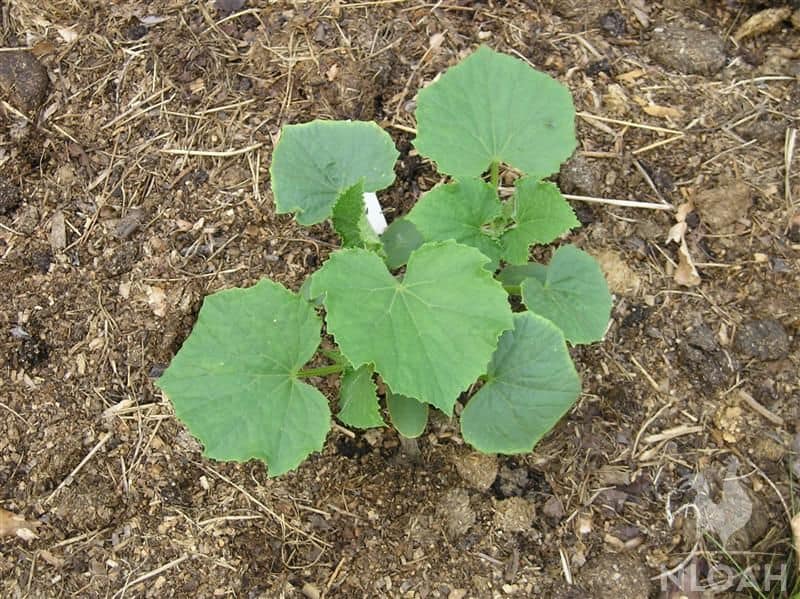
I’ve been amazed at how well these guys have done. If only I could keep the chickens from scratching around in the bed!! They’ve already dug up two of my cucumber plants. I still need to thin the plants out, if I can bring myself to do it. They should be planted in pairs, 2″ apart, with 12″ between pairs.
What I have found interesting though is that I started some cucumber seeds indoors the same time I planted the others outdoors. This little guy was one of my indoor seedlings which has been transplanted into the raised bed. See how much smaller it is than the rest?
I’ve discovered that direct sowing (planting the seed straight into the ground outside) cucumber plants works better than starting them inside and transplanting them. Good to know for next year!

I plan on building some sort of trellis or cradle out of string for the plants to climb up to the top of the fence. Guess I better get on it soon, too!
Hopefully, the tips you’ve learned for growing cucumbers in this post have been helpful. Whether you enjoy eating cucumbers fresh in salads or you prefer to make your own pickles, I hope you have the best growing season yet!
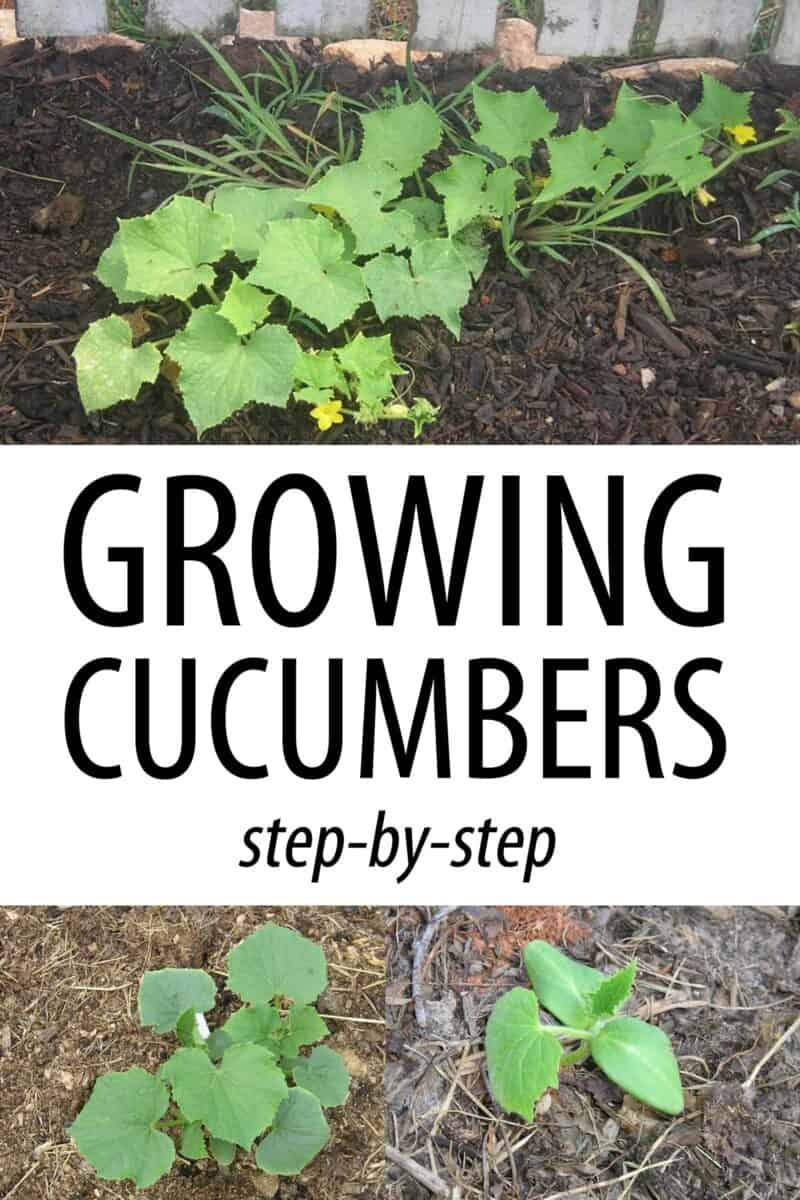
last update: 12/13/2021 by Rebekah Pierce

A city girl learning to homestead on an acre of land in the country. Wife and homeschooling mother of four. Enjoying life, and everything that has to do with self sufficient living.

Chickens don’t like to walk on wire, so if you have some spare chicken wire or some other extra pieces of some sort of wire fencing lying around, put that on the ground in your bed around your plants. We did that to our young fruit trees in our chicken yard, and they totally stopped bothering the ground around the trees. Your cucumbers are looking good–they’ll definitely need a strong trellis of some sort. Once the cucumbers start coming on with a vengeance, the vines get very heavy. Good luck!
I’ve stuck some old cheap/busted trellis up against the house for the cucumbers to roam up. Once the first tendril of your cukes gets to the fence, you’ll be golden. They’ll climb up and over before you know it.
(I’ve also had the same direct-sowing realization as well over the years – especially with onions and lettuce and marigolds and so on, you’re not alone in that one… now I toss things outside and let them duke it out with the weather.)
Hey, Kendra.
I’ve been reading your blog for awhile. I got hooked on your “Lessons from Butterberry Farm” series. I loved reading those stories.
Last year I turned a tomato cage upside down over my cucumber plants.I worked really well. It even kept the chickens from scratching them up. Once the plant starts growing it is very easy to wrap it around the tomato cage.
Happy gardening,
Mae
I’ve given you the “Sunshine Award” come on over to my blog to get it!
Your cucumbers are doing a lot better than mine. . I had tried the same thing to start them indoors but had the same results. I planted them by a fence so this is some thing new for me as well and i’m anxious to see how it will work out. I did peas on a fence and they look amazing so if my cucmbers do half as well I’ll be happy. If they have some thing to vine on i think that is all you need.
Is using twine strung up for them to climb on heavy duty enough or will it or the plant fall down because of the weight? Also do they have to be planted in pairs for the sake of pollination? It’s just about warm enough to plant them where I live and I was only planning on one plant but maybe I’ll have to do two.
Megan,
If you make a net type structure with twine and secure it well it will hold. I don’t think they *have* to be planted in pairs, but if I were you I’d plant at least 2. Otherwise you won’t get many cukes.